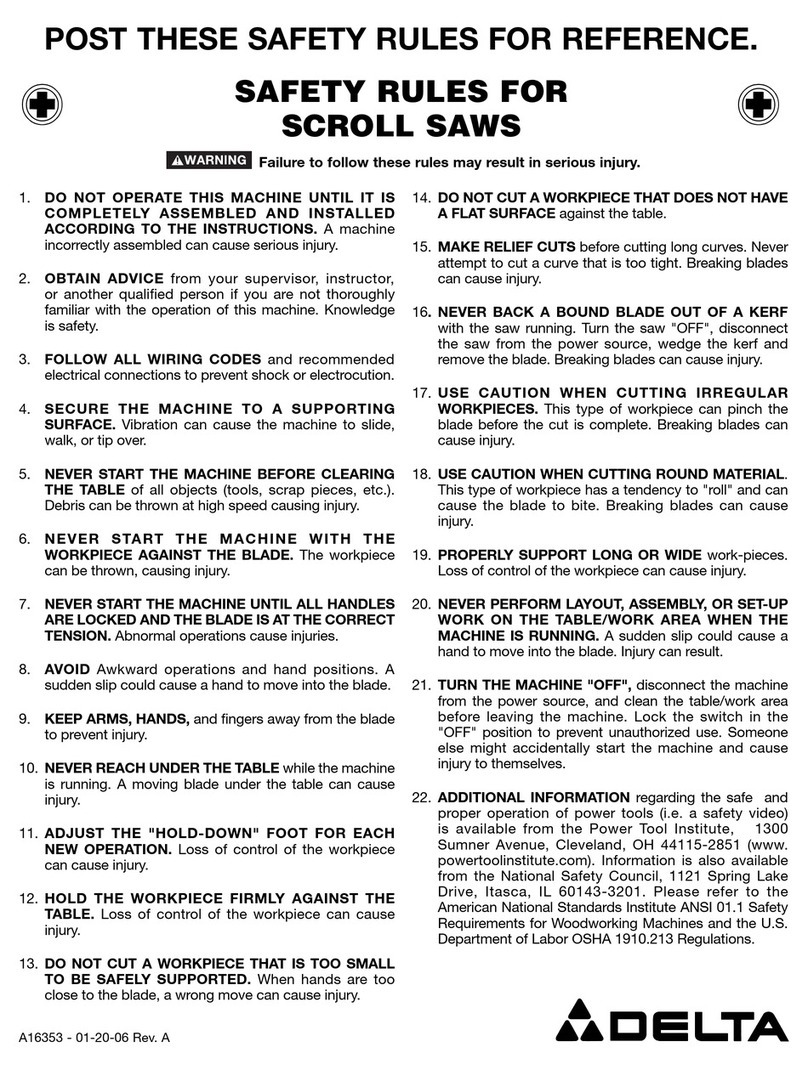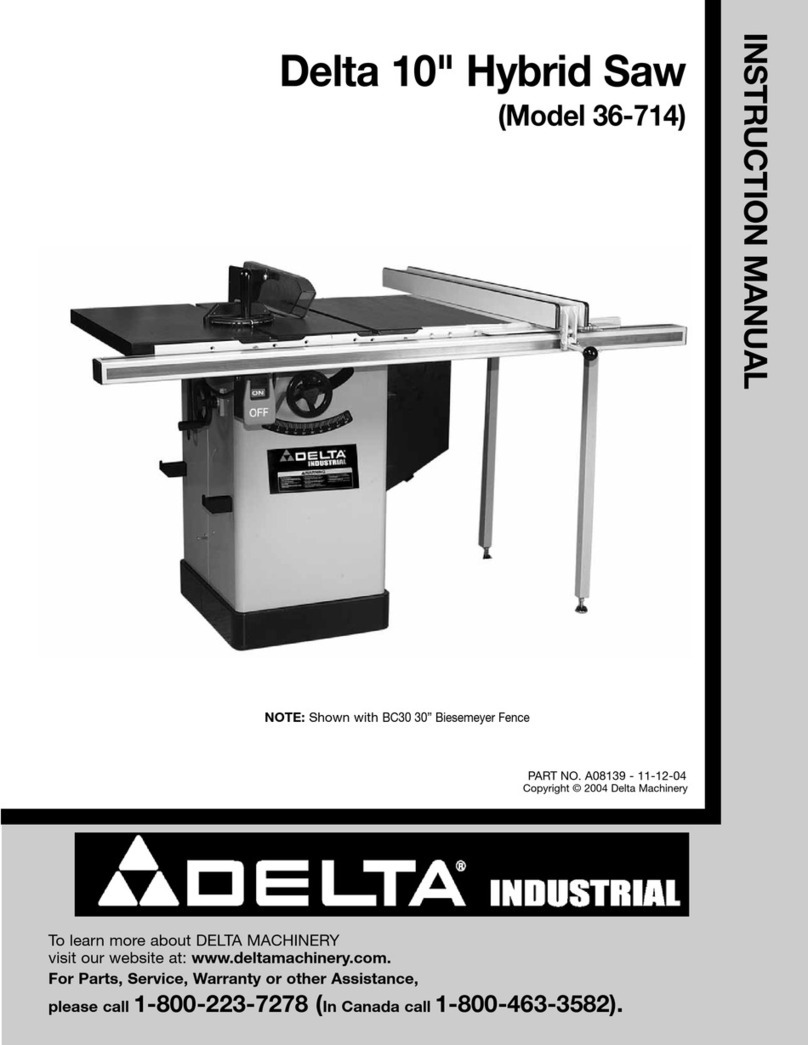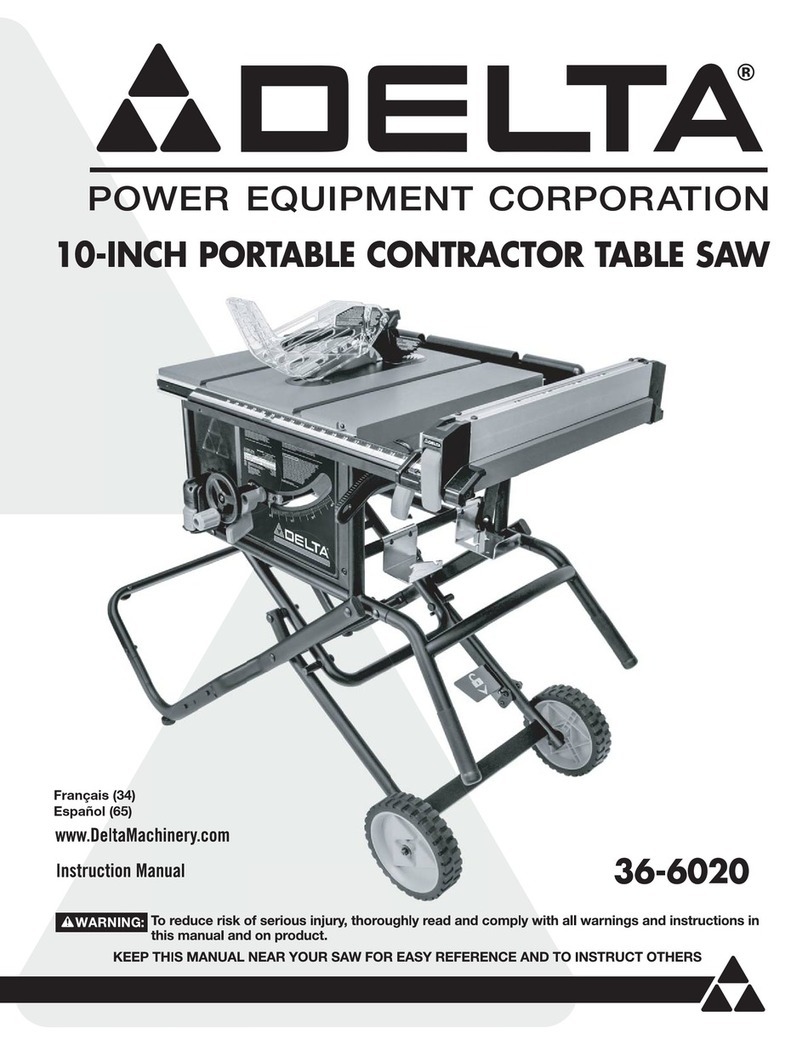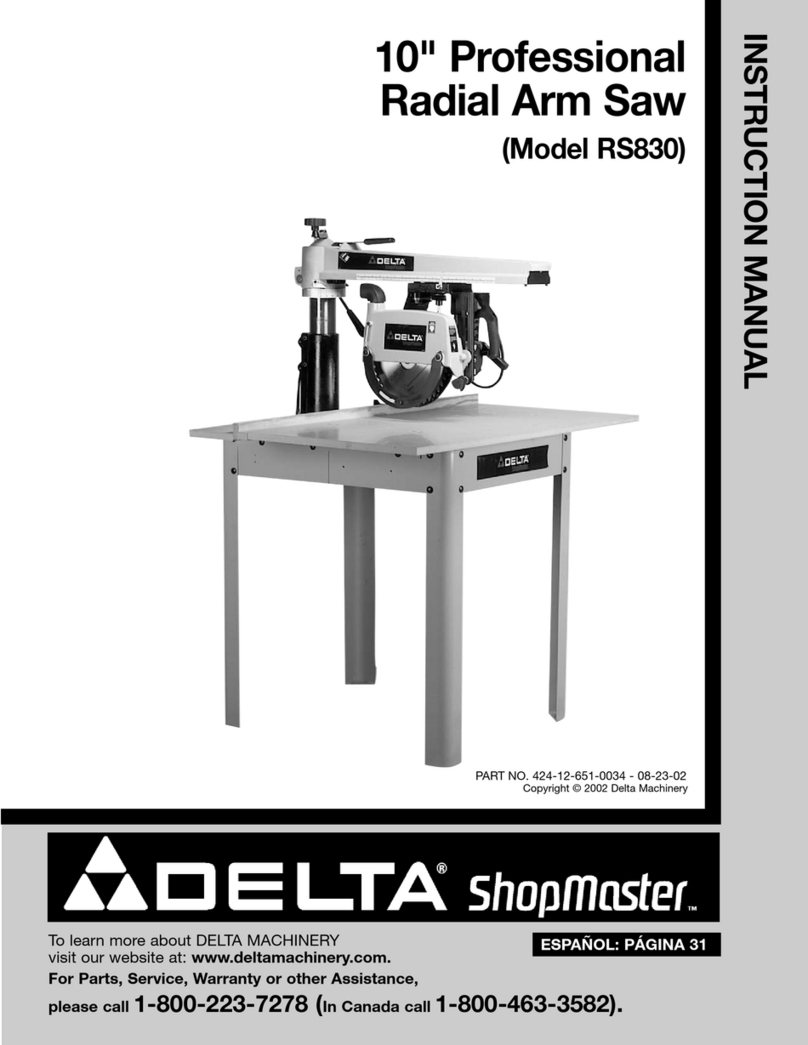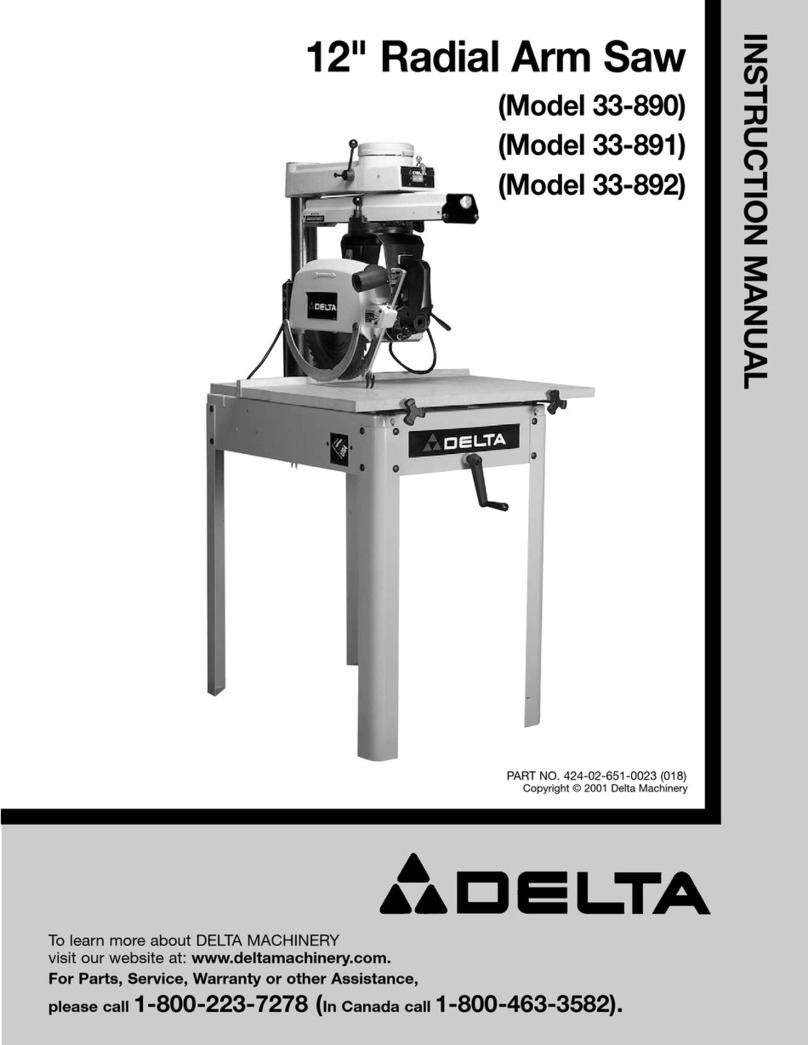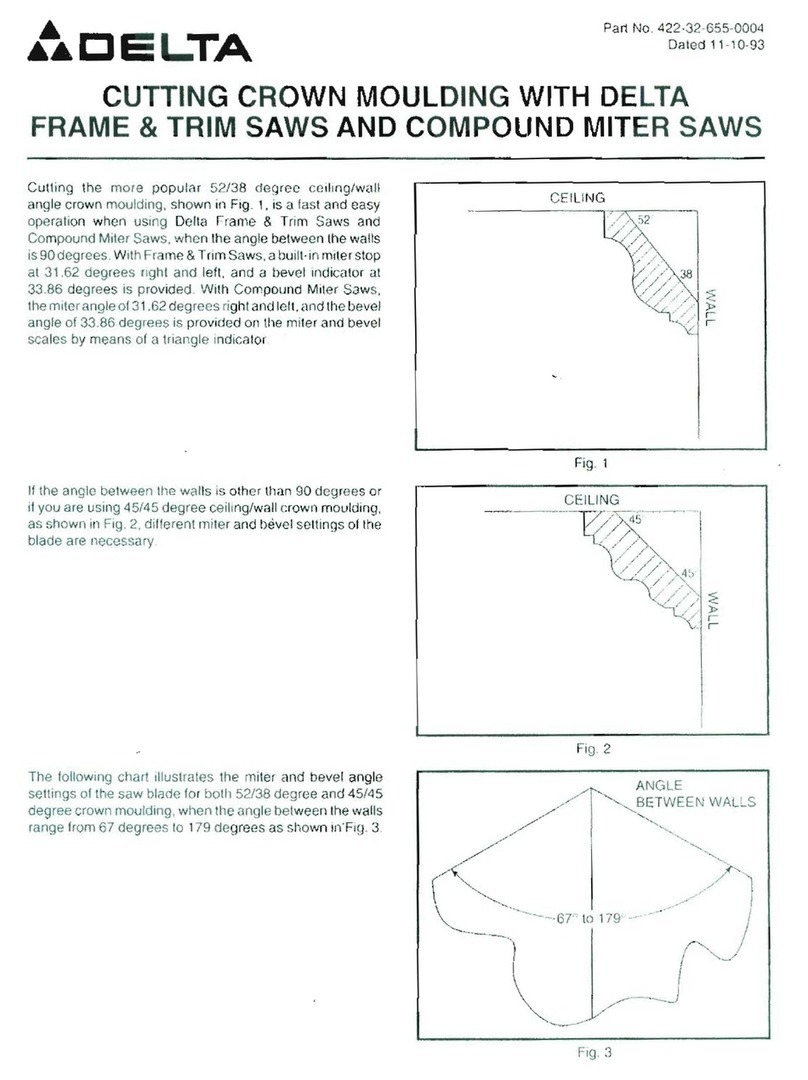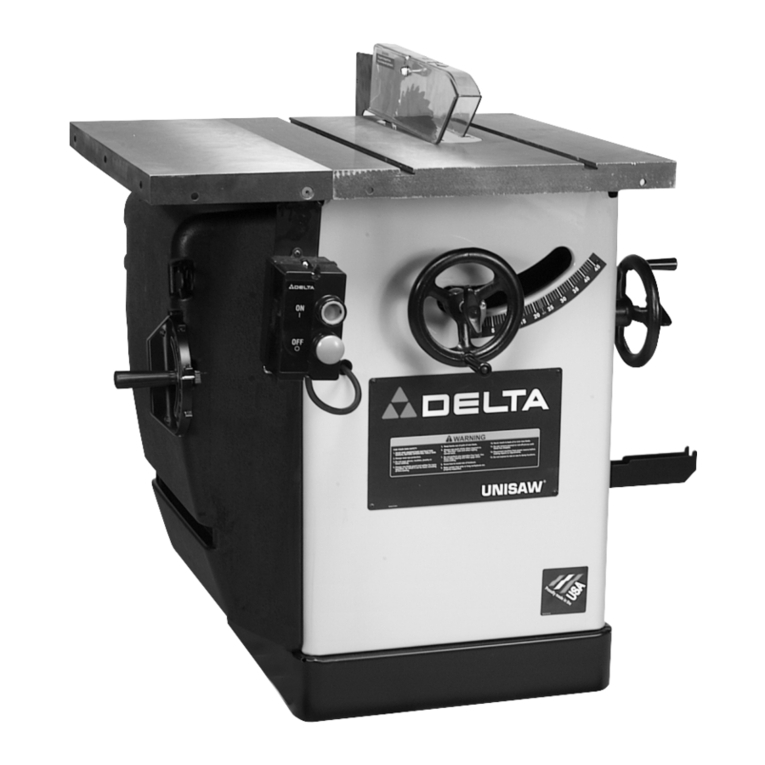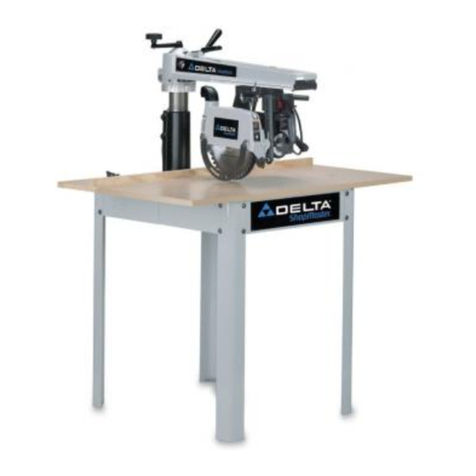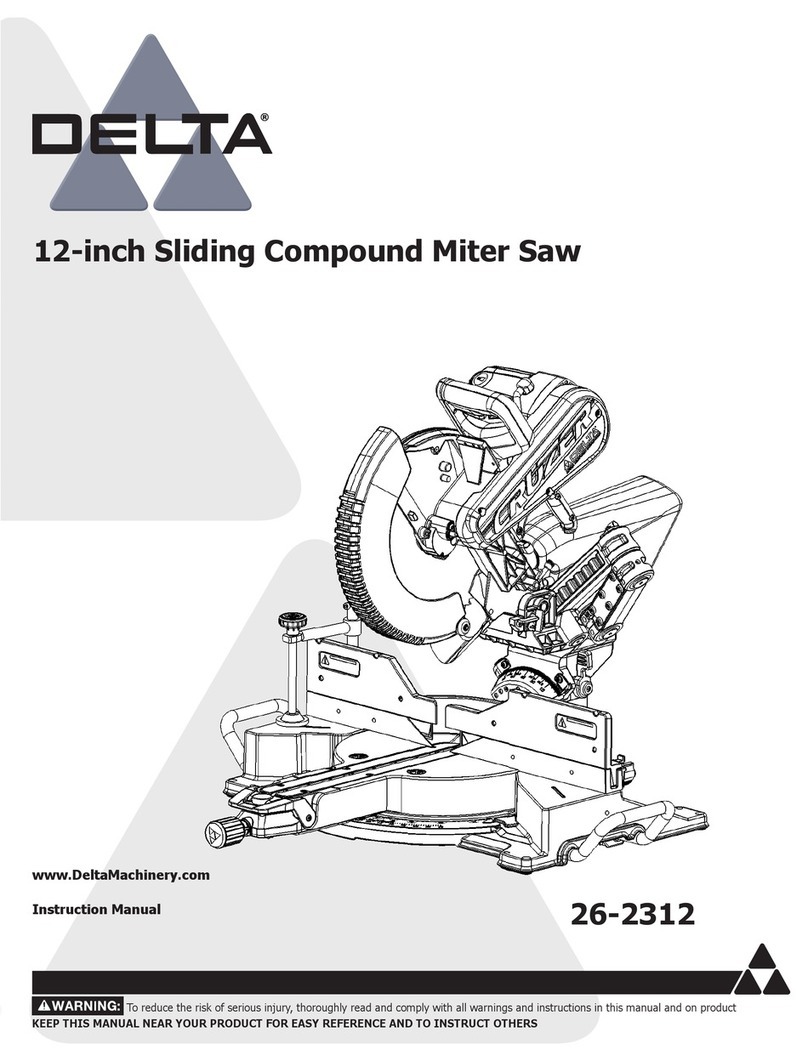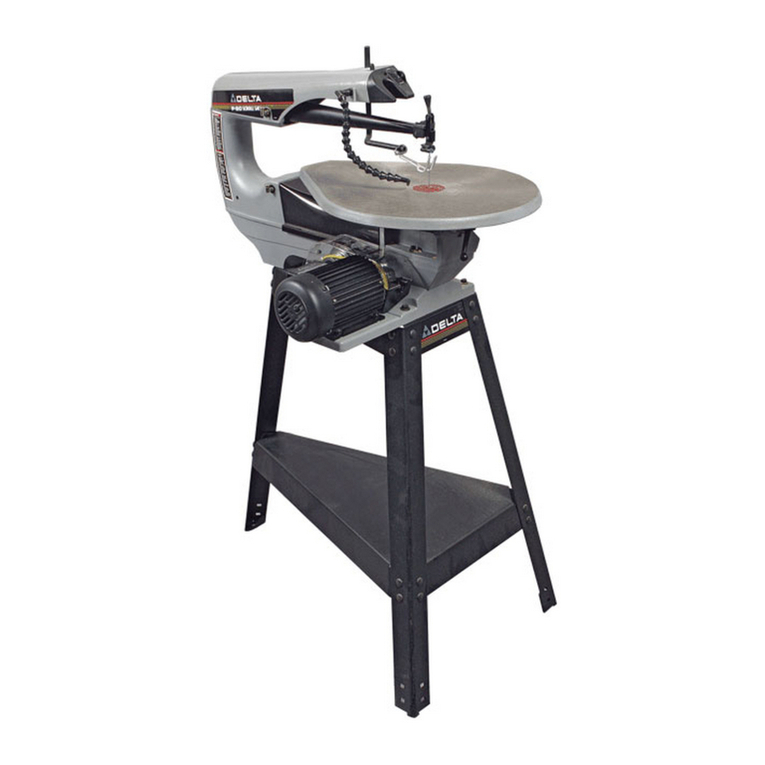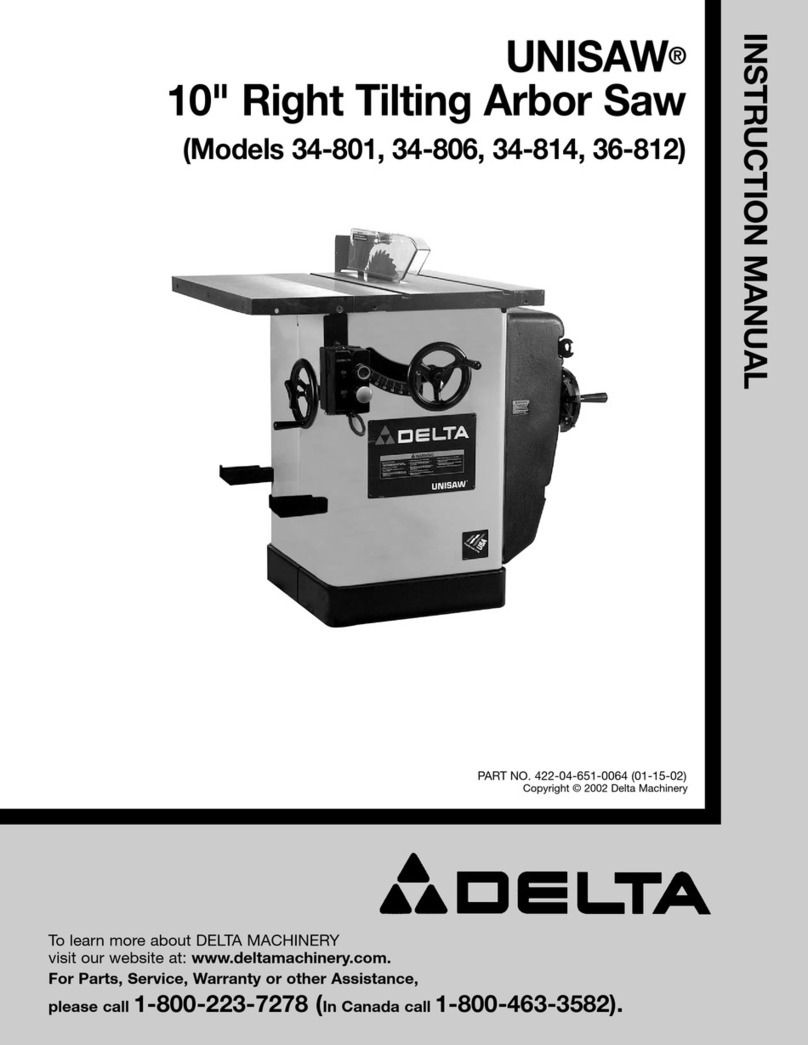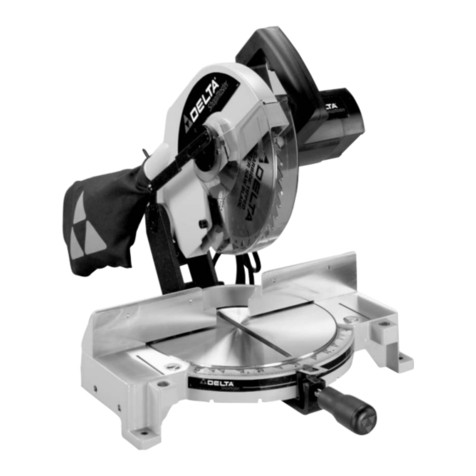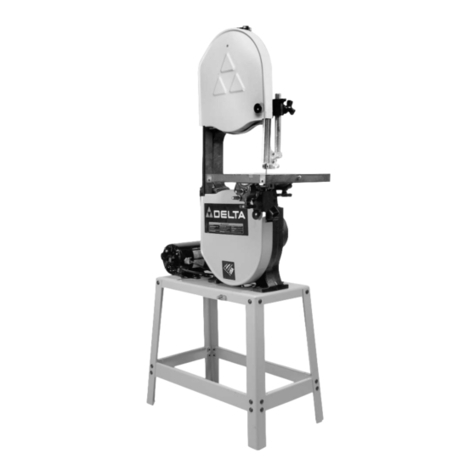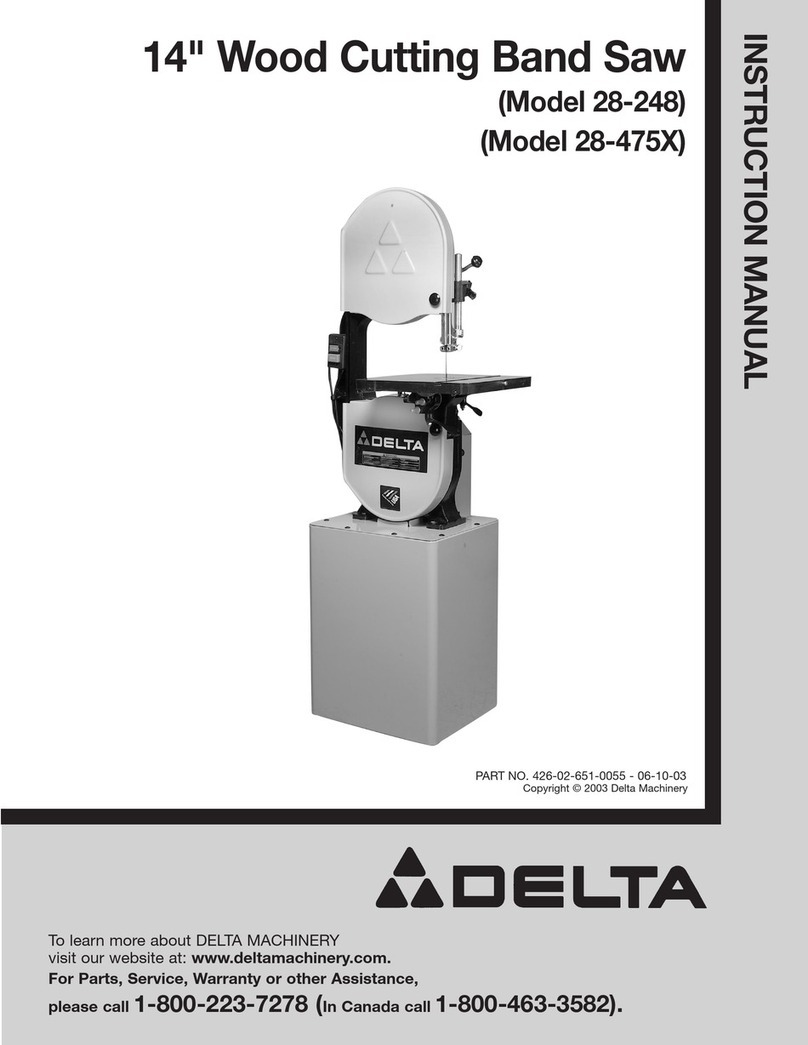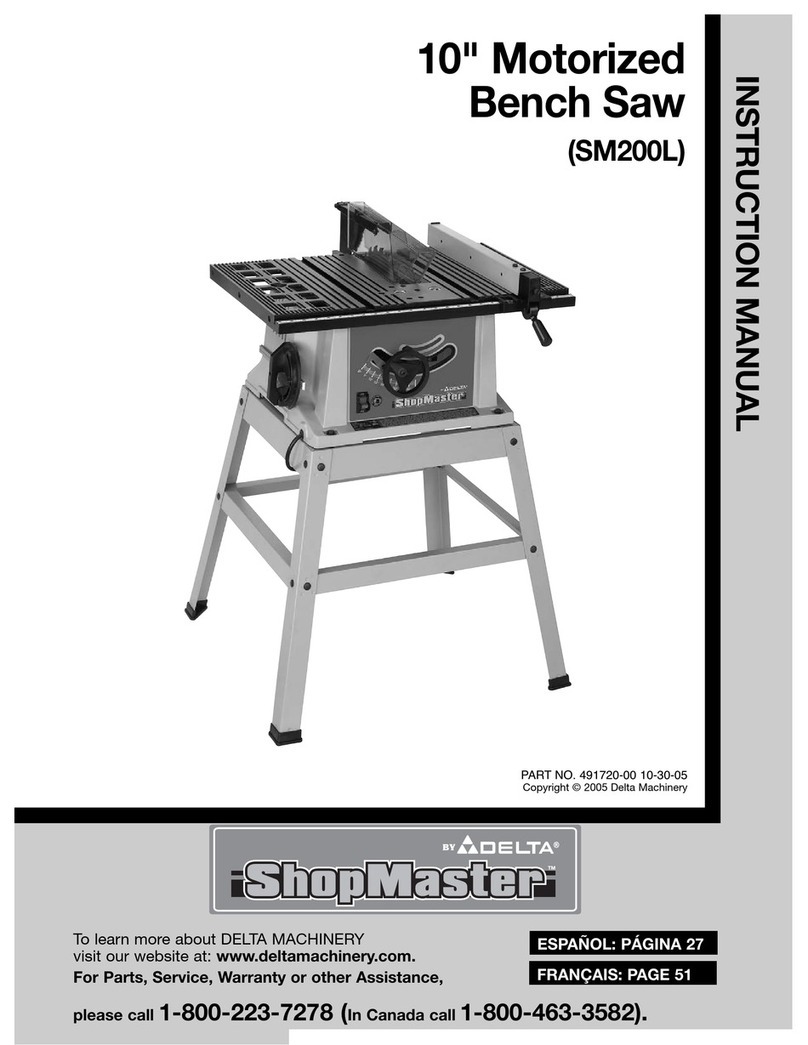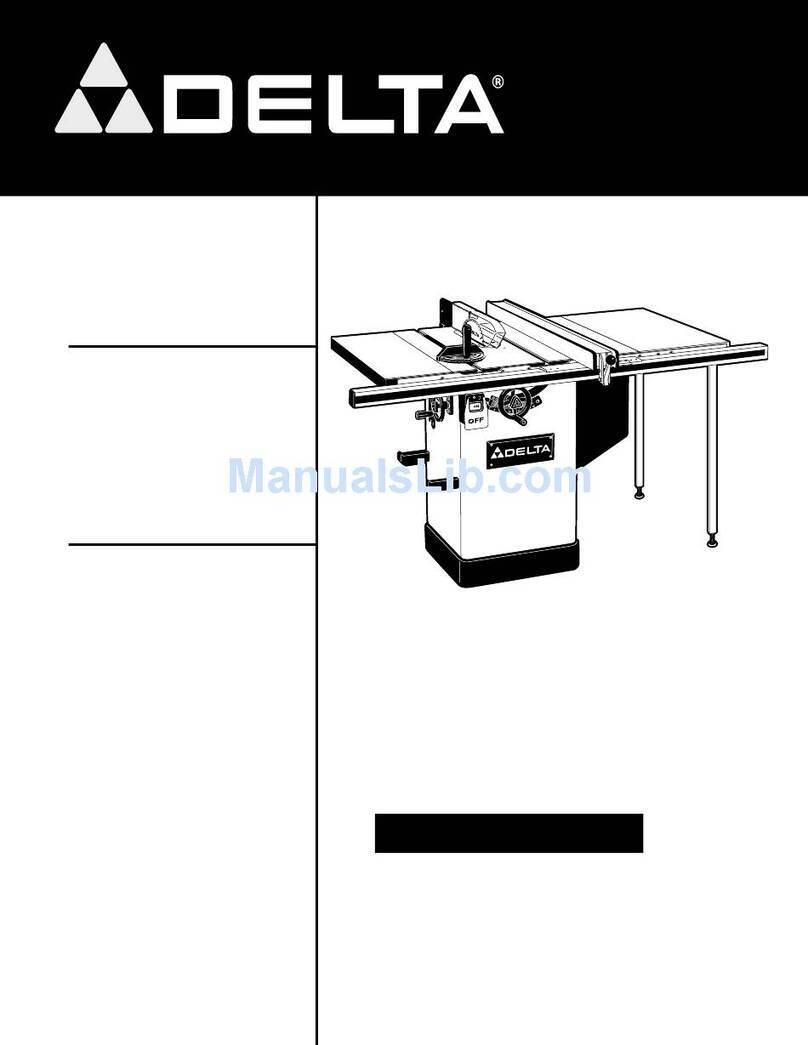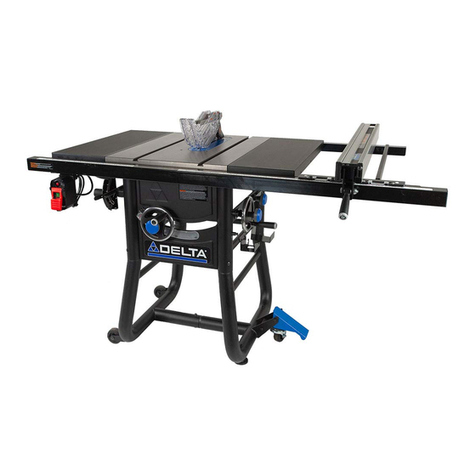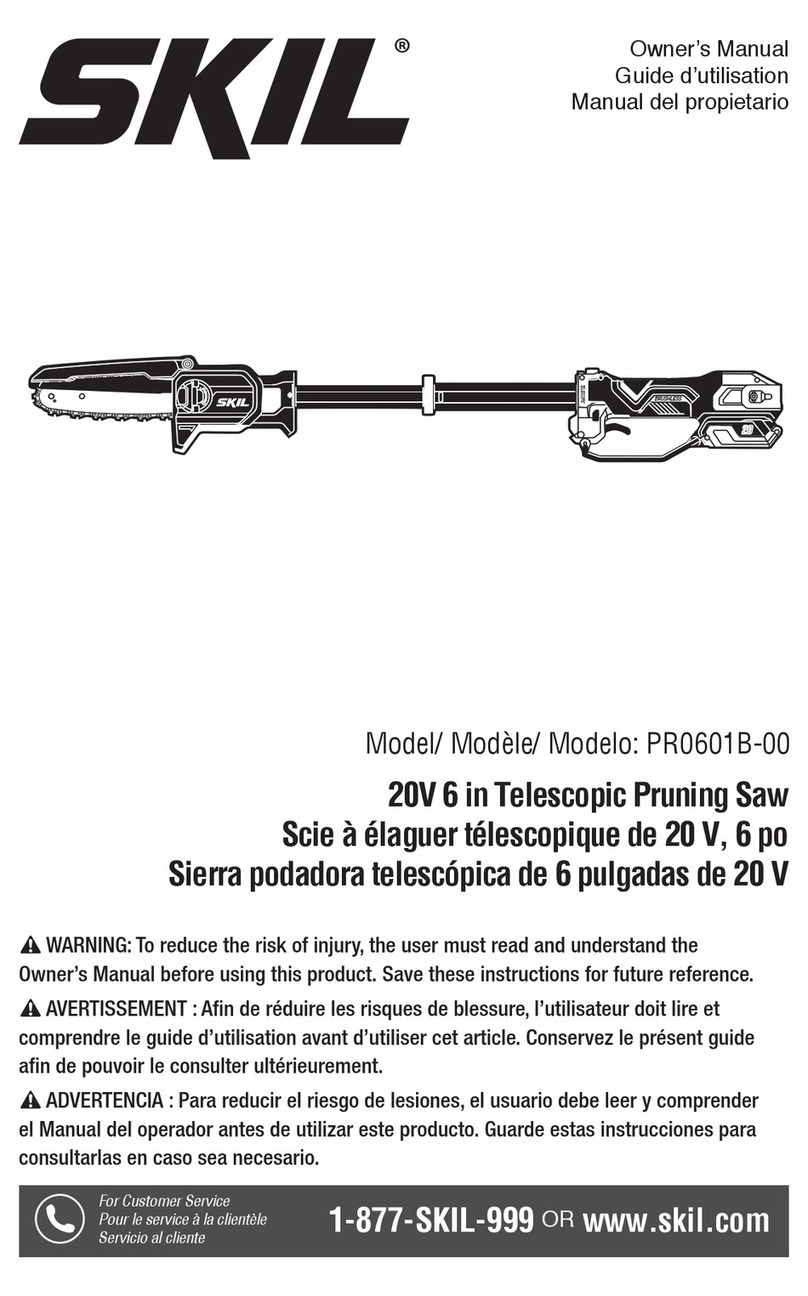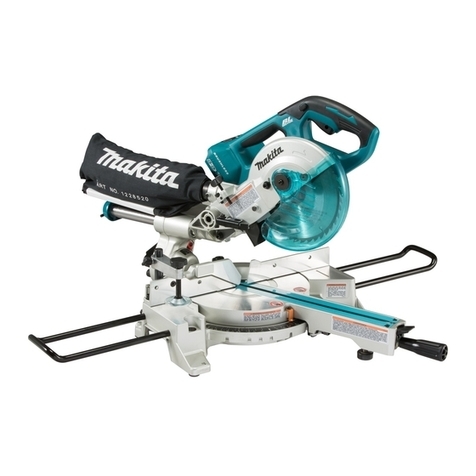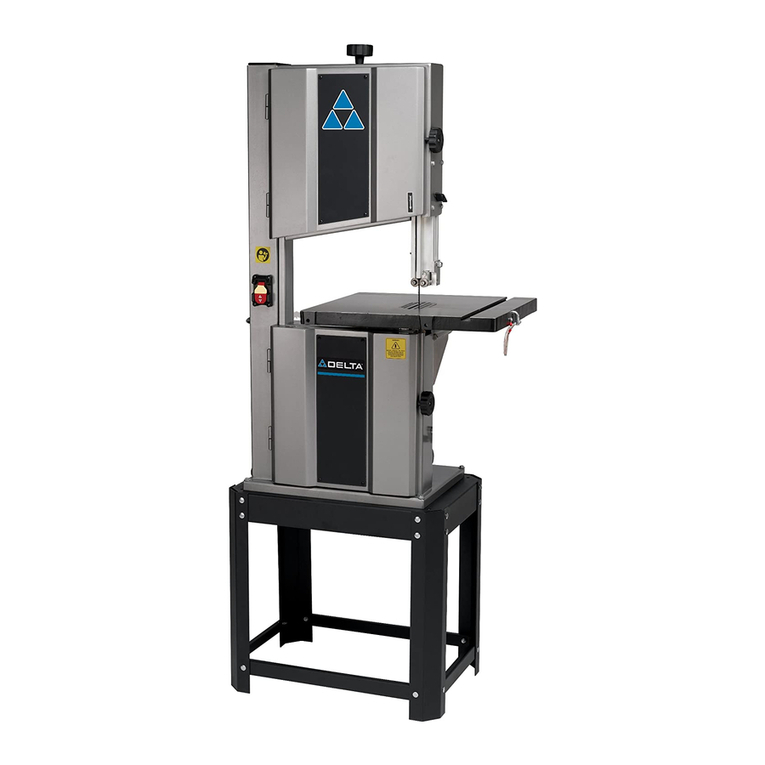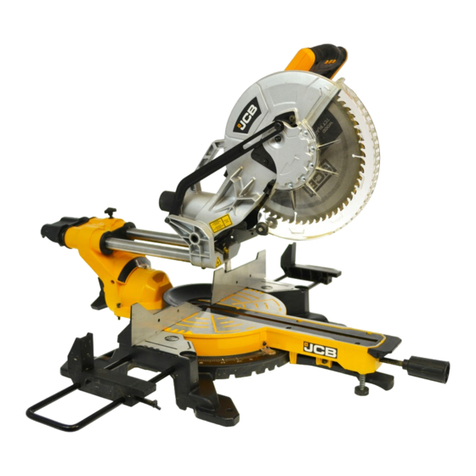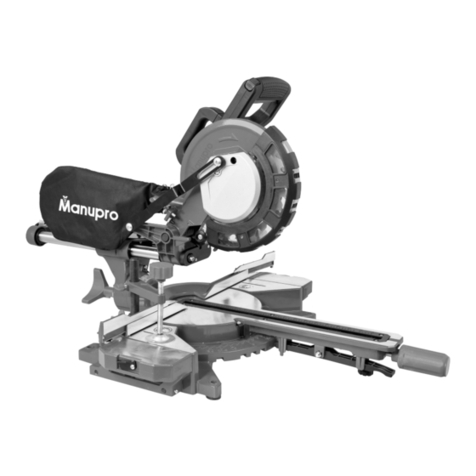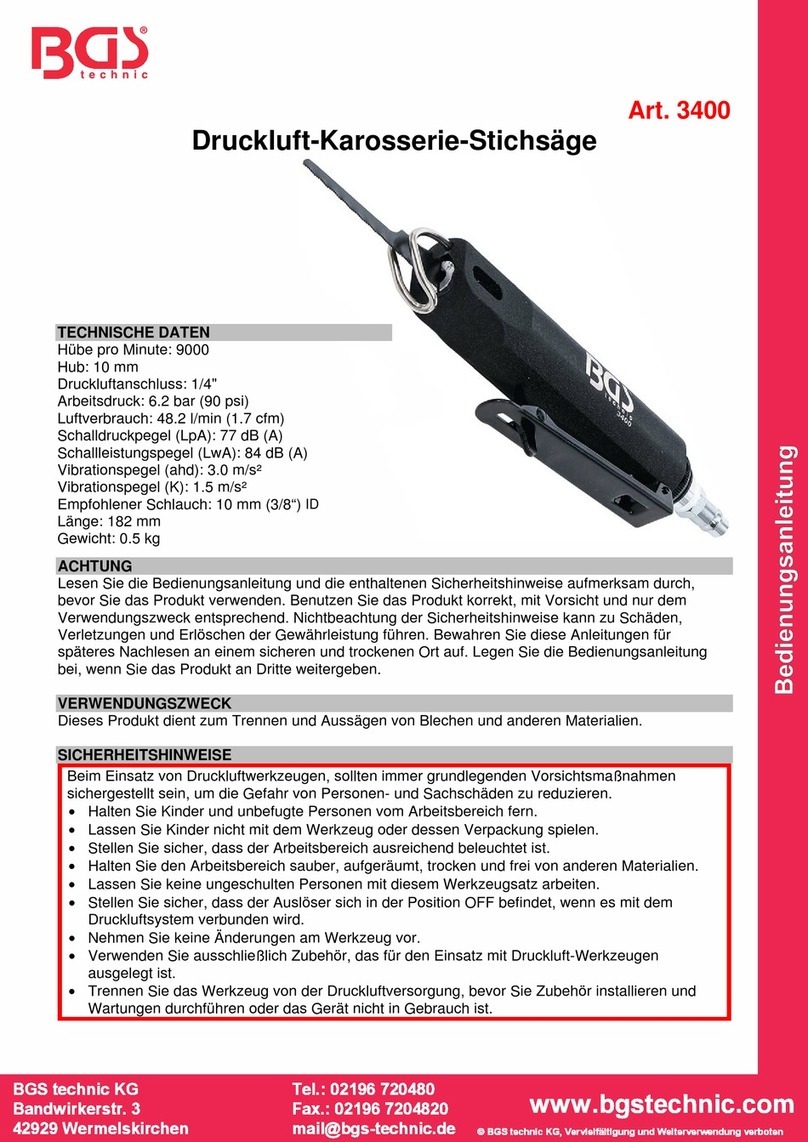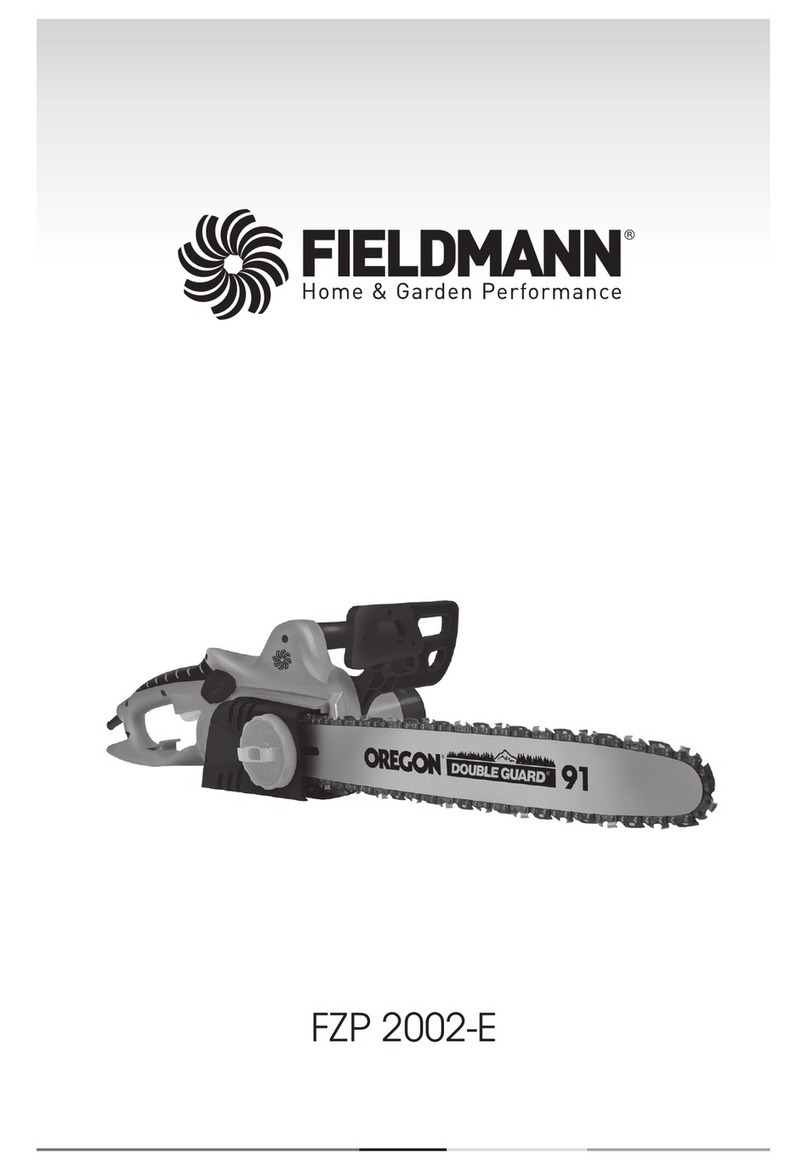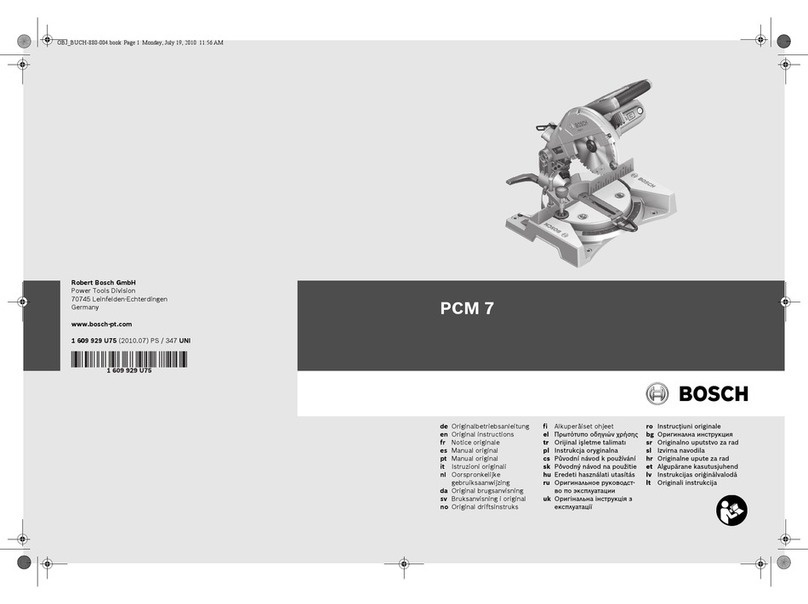
4
FAILURE TO FOLLOW THESE RULES MAY RESULT IN SERIOUS PERSONAL INJURY.
ADDITIONAL SPECIFIC SAFETY RULES
1. DO NOT OPERATE THIS MACHINE until it is assembled
and installed according to the instructions.
2. OBTAIN ADVICE FROM YOUR SUPERVISOR, instructor,
or another qualified person if you are not familiar with the
operation of this machine.
3. FOLLOW ALL WIRING CODES and recommended
electrical connections.
4. ALWAYS USE GUARDS, SPLITTER, AND ANTI-
KICKBACK PAWLS whenever possible, including through
sawing. Check to see that they are in place, secured and
working correctly. Test the anti-kickback pawl action before
ripping by pushing the wood under the anti-kickback teeth.
The teeth must prevent the wood from being thrown toward
the front of the saw.
5. CUTTING THE WORKPIECE WITHOUT THE USE OF A
FENCE OR MITER GAUGE IS KNOWN AS “FREEHAND”
CUTTING. NEVER perform “free-hand” operations. Use
either the fence or miter gauge to position and guide the
workpiece.
6. HOLD THE WORKPIECE FIRMLY against the miter gauge
or fence.
7. CUTTING COMPLETELY THROUGH THE WORKPIECE
IS KNOWN AS “THROUGH-SAWING”. Ripping and cross-
cutting are through-sawing operations. Cutting with the
grain is ripping. Use a fence or fence system for ripping.
NEVER use a miter gauge for ripping. Use push sticks for
ripping a narrow workpiece. Cutting across the grain is
cross-cutting. Never use a fence or fence system for cross-
cutting. Instead, use a miter gauge.
8. KICKBACK IS THE NATURAL TENDENCY OF THE
WORKPIECE TO BE THROWN BACK AT THE OPERATOR
when the workpiece initially contacts the blade or if the
workpiece pinches the blade. Kickback is dangerous and
can result in serious injury.
AVOID KICKBACK by:
A. keeping blade sharp and free of rust and pitch.
B. keeping rip fence parallel to the saw blade.
C. using saw blade guard and splitter for every possible
operation, including all through sawing.
D. keeping splitter aligned with sawblade.
E. keeping the anti-kickback pawls in place and
sharpened.
F. pushing the workpiece past the saw blade prior to
release.
G. never ripping a workpiece that is twisted or warped,
or does not have a straight edge to guide along the
fence.
H. using featherboards when the anti-kickback device or
the guard and splitter cannot be used.
I. never sawing a large workpiece that cannot be
controlled.
J. never using the fence as a guide when crosscutting.
K. never sawing a workpiece with loose knots, flaws, nails
or other foreign objects.
L. never ripping a workpiece shorter than 10”.
SOME MATERIALS ARE TOO HARD
AND SLIPPERY FOR THE ANTI-KICKBACK PAWLS
TO BE EFFECTIVE. Plastic and compositions (like
hardboard) may be cut on your saw, but be especially
attentive to following proper set-up and cutting
procedures to prevent any kickbacks when cutting
these materials.
9. USE THE CORRECT SAWBLADE FOR THE INTENDED
OPERATION. The blade must rotate toward the front of the
saw. Always tighten the blade arbor nut securely. Before use,
inspect the blade for cracks or missing teeth. Do not use a
damaged blade.
10. NEVER USE ABRASIVE WHEELS on this saw.
11. DO NOT CUT METAL WITH THIS SAW.
12. REMOVE CUT-OFF PIECES AND SCRAPS from the
table before starting the saw. The vibration of the machine
may cause them to move into the saw blade and be
thrown out.
13. CUT-OFF PIECES CAN BE THROWN BACK AT THE
OPERATOR. For large cut-off pieces, use a push stick to
push the piece past the blade and off the back of the saw
table. Do not reach across sawblade. Be careful that small
pieces do not contact the blade.
14. NEVER ATTEMPT TO FREE A STALLED SAW BLADE
WITHOUT FIRST TURNING THE MACHINE OFF. If a
workpiece or cut-off piece becomes trapped inside the
guard, turn saw off and wait for blade to stop before lifting
the guard and removing the piece.
15. NEVER START THE MACHINE with the workpiece
against the blade.
16. NEVER run the workpiece between the fence and a
moulding cutterhead.
17. KEEP ARMS, HANDS, AND FINGERS away from the
blade. Use a push stick to push small workpieces
through the saw. A push stick is a small wooden stick,
usually homemade, that should be used whenever the
size or shape of the workpiece would cause you to
place your hands within six inches of the blade. See
“CONSTRUCTING A PUSH STICK” in the back of this
manual for guidance on making your own.
18. AVOID AWKWARD OPERATIONS AND HAND
POSITIONS where a sudden slip could cause a hand to
move into the blade.
19. NEVER have any part of your body in line with the path of
the saw blade.
20. NEVER REACH AROUND or over the saw blade.
21. PROPERLY SUPPORT LONG (3 feet or longer) OR
WIDE (36” or wider) WORKPIECES. If extension tables
wider than 24” are attached to the saw, bolt the saw
stand to the floor, or use a sturdy outrigger support to
prevent tipping.
22. PREVENT MOTION OF THE SAW WHILE IN USE. If
the mobility kit is installed, lower the foot pedal and level
the feet so the saw does not rock, walk, slide or tip. If
necessary, secure the stand to the floor.
23. NEVER PERFORM LAYOUT, assembly or set-up work
on the table/work area when the machine is running.
24. TURN THE MACHINE “OFF” AND DISCONNECT
THE MACHINE from the power source before installing
or removing accessories, changing the sawblade, or
adjusting or changing set-ups. Lock switch in the “OFF”
position when making repairs.
25. CLEAN THE TABLE/WORK AREA BEFORE LEAVING
THE MACHINE. Lock the switch in the “OFF” position to
prevent unauthorized use.
26. ADDITIONAL INFORMATION regarding the safe and
proper operation of power tools (i.e. a safety video)
is available from the Power Tool Institute, 1300
Sumner Avenue, Cleveland, OH 44115-2851 (www.
powertoolinstitute.com). Information is also available from
the National Safety Council, 1121 Spring Lake Drive, Itasca,
IL 60143-3201. Please refer to the American National
Standards Institute ANSI 01.1 Safety Requirements for
Woodworking Machines and the U.S. Department of
Labor OSHA 1910.213 Regulations.




















